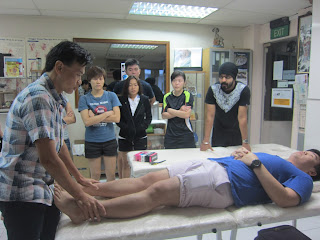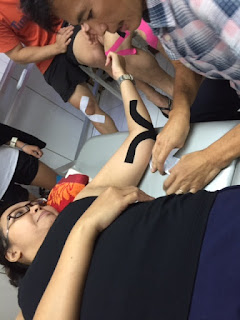 |
| Picture by Elliot Brown from Flickr |
As the year draws to a close, I looked back at all the articles I've read and I realise that there were many articles written by research scientists on exercise and brain health this year.
One of the more persistent themes seems to be that in order to live long, age well and maintain both a nimble and sharp mind we need to be physically active. Many of the new studies demonstrated previously unexplored ways in which exercise helps our brains and minds.
Exercise, usually running seems to increase the number of neurons in our brains and helps sharpen thinking skills and mood as we age.
Fortunately the exercise periods needed seems to be much shorter than we expect.
One article I read on brain imaging was really interesting. A group of Japanese researchers found that the brains of fit older men were almost as efficient as the brains of young people.
The researchers found that the aerobically fit older men's brains used fewer resources during thinking compared to the out of shape men of the same age. This is similar to someone fitter using less energy to perform a physical task compared to someone less fit.
So at least for me personally, a good reason to keep running regularly to make sure my brain stays sharp.
Another study looked at whether and how weight training and muscles affect the brain. Healthy, older women who completed the year long, twice weekly weight training sessions of light weight training showed fewer and smaller brain lesions in their brain's white matter compared to women of the same age who only completed a stretching/ balance training session or going to the gym once a week.
White matter connects and passes messages to different parts of the brain, which is crucial for memory and thinking.
While I was still training and competing, I used to go to the gym thrice weekly. Since 2009, I haven't at all. Looks like I may have to introduce some weight training/ resistance exercise in the coming new year.
I do have some heavy tiles/ drain covers in my back garden which I've hauled around before so I don't have to weed the garden so often. Believe me, they're heavy too. I may have my own "nature gym"in my back garden after all ......
So here's wishing all our readers, patients and friends a great year ahead in 2016.
References
Bolandzadeh N, Tam R et al (2015). Resistance Training And White Matter Lesion Progression In Older Women: Exploratory Analysis Of A 12-Month Randomized Controlled Trial. J Am Geriatr Soc, 63(10): pp 2052-2060. DOI: 10.1111/jgs.13644.
Hyodo K, Dan I et al (2015). The Association Between Aerobic Fitness And Cognitive Function In Older Men Mediated By Frontal Lateralization.NeurolImage. 125: pp 289-230. DOI:10.1016/j.neurolimage.2015.09.062.
















































